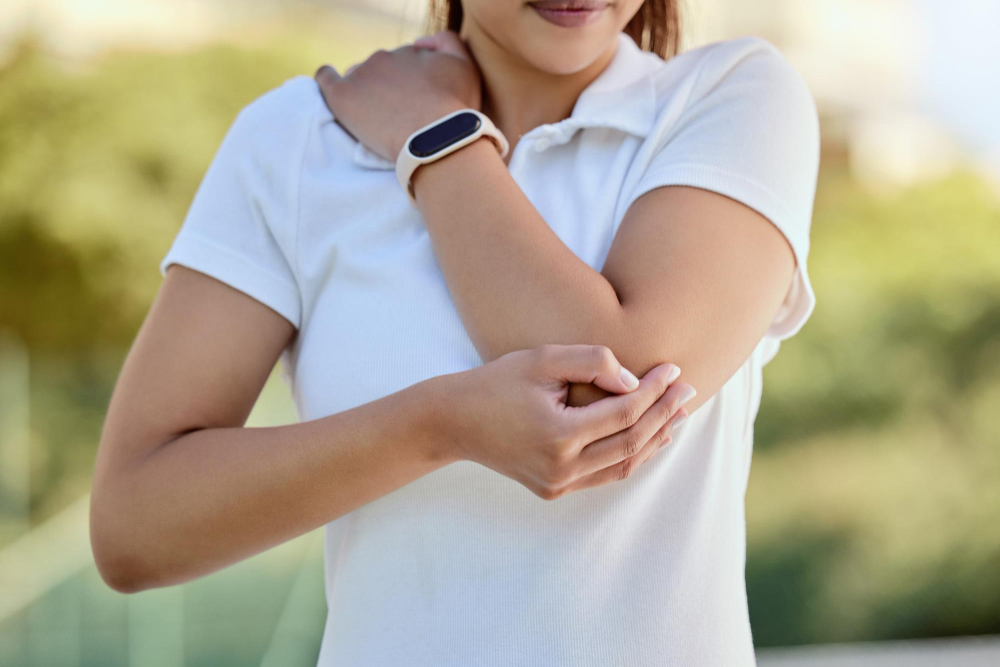Understanding Golfer's Elbow: Causes, Symptoms, and Treatment Options

Golfer's elbow, a common condition affecting the tendons of your forearm, might not just be a golfer's problem. It can impact anyone performing repetitive wrist or arm motions, causing discomfort that can interfere with daily activities. If you're dealing with pain, tingling, or reduced arm strength, it’s essential to understand what golfer's elbow is and how to treat it effectively.
This blog will cover the causes, symptoms, and treatment options for golfer's elbow, and when it might be time to consult with an orthopedic surgeon in Deland, FL.
What is Golfer's Elbow?
Golfer's elbow, medically known as medial epicondylitis, is a condition that causes pain and inflammation in the tendons that connect your forearm to your elbow. The pain typically centers on the bony bump on the inside of your elbow and can radiate down your forearm.
This condition is similar to tennis elbow, which affects the outer part of the elbow, but they differ in where the pain is experienced and which tendons are affected.
What Causes Golfer's Elbow?
Golfer's elbow occurs when the tendons in your forearm are overused or strained due to repetitive motions. Despite its name, you don’t have to be a golfer to develop this condition. A wide range of activities can trigger golfer’s elbow, including:
- Sports-Related Activities: Golf, baseball, tennis, and other sports that involve repetitive wrist or arm motions.
- Occupational Causes: Work that requires manual labor such as carpentry, typing, or plumbing.
- Hobbies and Daily Tasks: Painting, raking, or sewing can also contribute if done for extended periods.
Activities that force repetitive twisting or gripping motions are the most likely culprits.
Recognizing the Symptoms of Golfer's Elbow
The symptoms of golfer’s elbow vary depending on the severity of the condition, but common signs include:
- Pain and Tenderness
Pain often starts on the inside of your elbow and can spread to your forearm. It may worsen during gripping or lifting motions.
- Stiffness
Difficulties in bending or straightening the elbow, accompanied by stiffness, are common.
- Weakness
Many individuals experience a reduction in grip strength, making tasks such as holding objects challenging.
- Tingling or Numbness
Some people experience sensations of tingling or numbness that radiate into the forearm or fingers, typically in the ring and little fingers.
If left untreated, these symptoms can worsen over time, interfering with daily function and productivity.
How is Golfer's Elbow Diagnosed?
If you’re experiencing symptoms of golfer’s elbow that don’t improve with rest, it’s crucial to consult with a medical professional. An evaluation typically includes:
- Medical History Review
Your physician will ask about your specific symptoms, recent activities, and history of injuries.
- Physical Examination
This will involve testing strength, flexibility, and areas of tenderness.
- Imaging Tests
An X-ray or MRI may be requested to rule out other conditions or assess tendon damage.
If you’re located in or near Deland, FL, seeking care from an experienced orthopedic surgeon can provide the clarity and treatment plan needed to ease your discomfort.
Effective Treatment Options for Golfer's Elbow
Treatment for golfer’s elbow can vary from simple home remedies to advanced medical interventions. Below are some commonly recommended approaches:
1. Rest and Activity Modification
The first step in treating golfer’s elbow is to reduce or eliminate physical activities that worsen your symptoms. Avoid repetitive motions or heavy lifting for a period of time.
2. Ice Application
Applying ice or a cold compress to the affected area can reduce pain and inflammation. Be sure to wrap ice in a cloth to avoid skin irritation.
3. Physical Therapy
A tailored physical therapy program may include exercises to stretch and strengthen the affected tendons and muscles. Strengthening the forearm can promote recovery and help prevent recurrence.
4. Bracing or Supports
Wrist or elbow braces can reduce strain on the tendons by limiting movements associated with discomfort.
5. Medications
Over-the-counter anti-inflammatory medications such as ibuprofen can provide short-term relief from pain and swelling.
6. Corticosteroid Injections
For more severe or persistent cases, corticosteroid injections can be used to reduce inflammation and pain.
7. Surgical Intervention
In rare cases, if conservative treatments fail to alleviate symptoms, surgery may be necessary to repair damaged tendons. Surgery is typically an outpatient procedure and involves removing damaged tissue to promote healing.
Preventing Golfer's Elbow
While certain occupational or leisure activities may put you at risk, preventive steps can help reduce your likelihood of developing golfer’s elbow:
- Strengthen Your Forearm
Regular exercises targeting your forearm muscles improve resilience against stress and strain.
- Warm-Up Before Activity
Gentle stretches and warm-ups prepare your joints and muscles for repetitive motions.
- Modify Technique
Whether it’s adjusting your golf swing or ergonomics at work, proper technique reduces unnecessary strain.
- Use Proper Equipment
Using lighter tools, ergonomic handles, or equipment suited for your activities can significantly reduce stress on your tendons.
When to See an Orthopedic Surgeon in Deland, FL
While mild cases of golfer’s elbow often respond to conservative treatments like rest and physical therapy, persistent or severe symptoms may require professional help. If you’re experiencing ongoing pain, loss of function, or worsening weakness, don’t wait to seek medical care.
An experienced orthopedic surgeon in Deland, FL, can provide an accurate diagnosis and a customized treatment plan to get you back to what you love doing, pain-free.
Take the Next Step Towards Relief
Golfer’s elbow can interfere with your work, hobbies, and overall quality of life. The good news is that with the right treatment plan and preventive measures, recovery is achievable.
If you’re looking for an experienced orthopedic surgeon in Deland, FL, contact Central Florida Bone & Joint Institute today. Our team of experts is ready to guide you through every step of your recovery. Don’t wait – take the first step towards pain-free movement and schedule a consultation today.